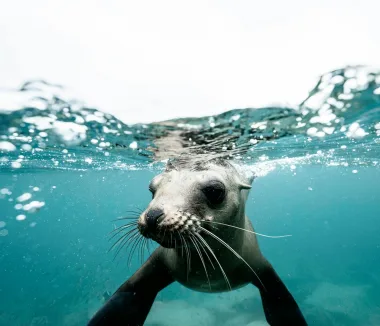Last Updated on June 1, 2023 by Ecologica Life
We like to have nice clothes. They keep us warm and allow us to express ourselves. Unfortunately, the modern fashion industry creates many problems. Around the world, a truck-load of clothing is burned or dumped in landill every second. This creates a huge amount of waste that is not good for our wallets or our planet.
From fast fashion to pollution and even modern day slavery. In this article we will explore the depths of the textile industry’s corruption and what can be done to fix it.
Table of Contents
The Many Problems of the Fashion Industry
Shopping used to be a rare occasion that happened a few times a year, when our clothes were beyond repair or we outgrew them. But clothes have become a disposable item since hobby shopping emerged.
Clothing is now often designed in one country, manufactured in another and quickly distributed around the world. This has only been accelerated by the rise of the fast fashion phenomenon.
What is Fast Fashion?
A recent development in the fashion industry is fast fashion. Fast fashion is described as affordable, stylish clothing that adapts quickly to the needs of the consumer by taking designs from celebrities and catwalk models and bringing them to the high street.
Basically, you buy the latest trends while they are in fashion and then throw them away after wearing them a few times so that you can buy the next new trend.
It is the key component of the destructive system of overproduction and overconsumption. It is one of the drivers for the industry to pollute so much.
But to understand why fast fashion pollutes so much, we must look closer at how our clothes are made and what happens to them when we throw them away.
Environmental and Ethical Problems
Waste & Microplastic Pollution
On average, Europeans throw away about 11 kg of textiles per person per year. Hardly any of these textiles are recycled or donated, so they end up at landfills or are incinerated.
Synthetic fabrics, such as polyester, are essentially plastic fibres whick are not biodegradable. Researchers at the University of Plymouth found that a single washing machine load can release up to 750,000 microplastic fibres per wash. These microplastics then end up in the sea where marine life such as whales that ingest millions of these microplastics every day. Unfortunately even the smaller fish that we typically eat ingest microplastics.
Other research from the University of Plymouth suggests that wearing synthetic clothes can be just as bad as washing them, as these microplastics are released into the air.
What can we do about it?
- Invest in natural and organic fibres.
- Wash clothes only when you need to, and at a wash cycle with a lower temperature (30ºC). This will reduce the amount of microplastics released during washing.
- Buy less, buy higher quality and recycle.
- You can invest in a microplastic filter for your washing machine.
Water Pollution & Chemical Toxicity
In the majority of countries where clothing is produced, toxic wastewater from the textile industry is allowed to be discharged directly into waterways without any treatment.
Toxic compounds found in wastewater include lead, mercury and arsenic.
This seriously damages aquatic life and the health of the millions of people who live along these rivers. This pollution then ends up in the ocean, where it spreads around the world.
The use of fertilisers and pesticides in non-organic cotton production is also a major source of freshwater and marine water pollution, soil degradation and early deaths among cotton farmers.
Some of these chemicals have been found in clothes sold in top brand retail stores, and can be extremely dangerous to the consumer.
What can we do about it?
- Invest in clothes made in countries with stricter environmental regulations for factories (EU, Canada, USA…). This will help reduce water pollution and the likelihood of chemical toxins being in your clothes.
- Always wash new clothes before using them for the first time.
- Look for clothing with a certification label that controls chemical content, such as OEKO-TEX, GOTS or BLUESIGN.
- Choose organic fibres as they do not require chemicals.
- Invest in sustainable brands. (This is tricky because of greenwashing, so do your research!)
Water Consumption
The fashion industry is a significant consumer of water.
All our garments are dyed and finished using a significant amount of freshwater. One tonne of dyed fabric can require up to 200 tonnes of freshwater.
Cotton is usually grown in warm, dry climates. But it requires a lot of water to develop – around 9,700 litres of water are needed to produce just 1 kg of cotton.
The extreme pressure on this already scarce resource has drastic environmental consequences, such as the desertification of the Aral Sea, where cotton production has completely dried up the water.

85% of the daily needs in water of the entire population of India would be covered by the water used to grow cotton in the country. 100 million people in India do not have access to drinking water.
Stephen Leahy, The Guardian
What can we do about it?
- Choose fibres with low water consumption such as linen, hemp, recycles fibres, etc.
- Make the most out of your cotton clothes by using them completely until the end of their life. Alternatives you can consider include donating, selling and repairing/repurposing your clothes into something else, such as a tote bag.
Greenhouse Gas Emissions
Greenhouse gases (GHGs) are a key driver of climate change.
Research done by McKinsey & Company suggests that the fashion sector was responsible for 2.1 billion tonnes of GHG emissions in 2018, around 4% of the global total. This is equivalent to the total emissions of the economies of France, Germany and the UK combined.
These GHG emissions are caused by the production, manufacture and transport of millions of garments each year.
Most of our clothes are made from synthetic fibres (polyester, acrylic, nylon, etc.), which require more energy to produce than natural fibres.
In addition, most of our clothes are made in China, Bangladesh or India, which are mainly coal-fired countries. This is the most polluting form of energy in terms of carbon emissions.
What can we do about it?
- Choose natural fibres.
- Buy less, buy quality and repair clothes.
- Buy clothes made in countries that use renewable energy.
How Can the Fashion Industry Do Better?
Textile companies and their customers are becoming increasingly aware of the negative environmental and social impacts of the textile industry. Within their supply chains, brands and retailers have begun to address the specific environmental or social issues, both independently and through industry-wide organisations and programmes.
However, to make the textile industry more environmentally friendly and socially responsible, these issues need to be tackled at their root.
The biggest problems in the textile industry can be tackled by looking at two key issues:
- The low use of garments. Garments are produced that are never sold, or that are bought, used only a few times and then thrown away.
- Low recycling rates of garments after use.
The report: A New Textiles Economy: Redesigning Fashion’s Future, published by the Ellen MacArthur Foundation, outlines how the textile industry would operate in a circular economy.
A circular textile economy would require four key elements:
- Phasing out substances and microfibres of concern.
- Increase the use of clothing.
- Radically improve recycling.
- Make efficient use of resources and switch to renewable inputs.
In line with the concepts of a circular economy, this proposal offers a vision that is beneficial for business, society and the environment, while being restorative and regenerative by design.
In this new textile economy, textiles are never wasted as they are used to their full potential before being recycled into new products.
In addition to replenishing natural capital, designing out pollution and using renewable resources and energy, this would provide a growing global population with access to high-quality, low cost, personalised clothing. This would reduce the economic cost of pollution drastically.
We encourage you to read the full report find out more about how the textile industry can be transformed into a more sustainable industry.
Want to know more about how you can wear more sustainably? Check out our article.








